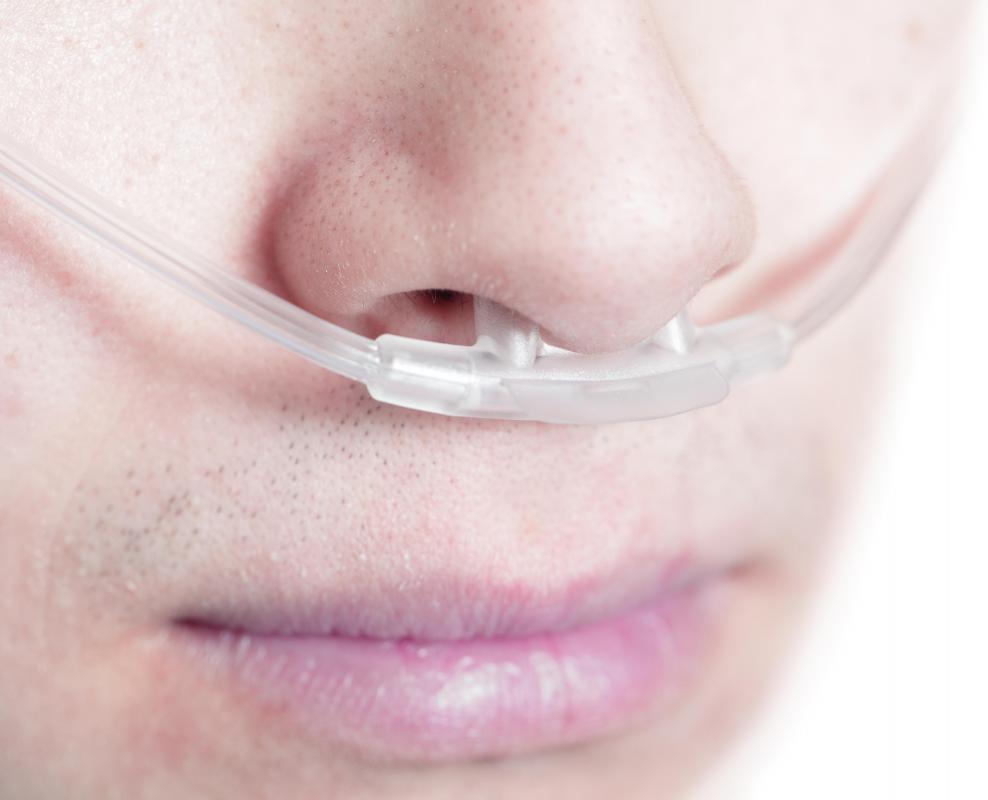At WiseGEEK, we're committed to delivering accurate, trustworthy information. Our expert-authored content is rigorously fact-checked and sourced from credible authorities. Discover how we uphold the highest standards in providing you with reliable knowledge.
What Are the Symptoms of Cyanosis?
The symptoms of cyanosis can involve several abnormalities that are not necessarily indicative of the condition, though one of the most obvious symptoms is a blue-colored tinge to the exterior surface of the skin or mucous membranes. Other less obvious symptoms of cyanosis which could also be indicators for other health problems include anxiety, over-breathing, and reduced appetite. Inflammation of regions of the skin like the face or eyes can also be possible symptoms, as well as a sense of lethargy, or being unusually tired for prolonged periods. Since cyanosis is a state where there is an abnormally low level of oxygen in the bloodstream, it can cause many related health issues.
Hypoxemia, which is the medical term for a cyanotic state caused by a lack of oxygenation of the blood, was initially diagnosed in the past by looking for evidence of perioral changes. That is, doctors would examine the tissue region around the mouth for a blue or purple discoloration, as well as look at peripheral regions of the body like the fingertips and fingernails. This method of diagnoses has been discredited as of 2011, however, since several factors can result in the symptoms being missed or seen when they are not really there. Lighting conditions can give odd coloration to the skin and variations in normal skin tone can also be misleading. A more definitive test for low blood oxygenation levels is a blood gas analysis.

Other abnormal conditions that may or may not be symptoms of cyanosis include an unusually fast or slow heart rate, changes in mood and mental status, and dyspnea, or labored breathing. Other breathing abnormalities such as hyperventilation can also be indicative of the condition or of other causes. In the past, patients who were anemic were often diagnosed as having symptoms of cyanosis because anemic individuals may also be hypoxemic, having lower-than-normal amounts of oxygen in the capillaries near the surface of the skin.

Causes of cyanosis are not always due to low levels of oxygen in the bloodstream. Abnormal traits for hemoglobin itself can also produce similar symptoms such as the disorder methemoglobinemia. Acute changes in health can also cause the symptoms of cyanosis, including being choked and experiencing suffocation. Several forms of heart and lung impairment can also lead to and be part of the onset of cyanosis, such as cyanotic heart disease.

When the symptoms occur suddenly, it is considered to be a medical emergency that should immediately result in contacting emergency medical personnel or visiting a hospital. Children or infants who display these symptoms should also be immediately taken to a hospital. With children, non-verbal symptoms can include grunting sounds, sitting very still, and strange breathing patterns, as well as skin discoloration that may be a dark red instead of purple or blue. Small children may also have muscle contractions such as hunched shoulders or a tight chest, or unusual irritability and an inability to fall asleep. A cyanosis-like state called pseudocyanosis can also be caused by the accidental or intentional ingestion of metals like silver and lead, or as a side effect of drugs or toxins that have entered the body.
AS FEATURED ON:
AS FEATURED ON:


















Discuss this Article
Post your comments